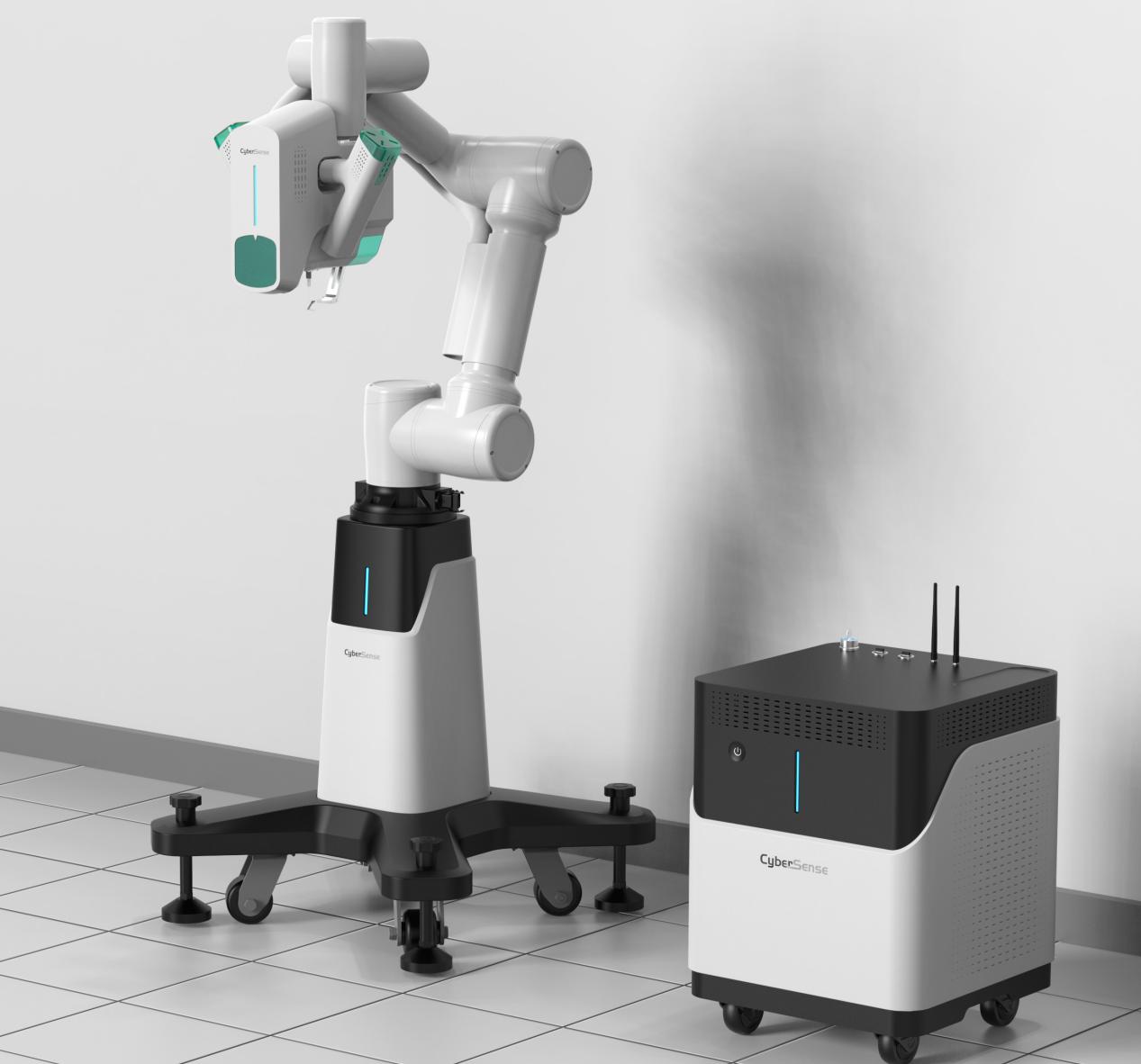Laboratory of Brain Atlas and Brain-Inspired Intelligence Successfully Develops CyberSense Flexible Microelectrode Implantation Robot for Brain-Computer Interfaces
Font:【B】 【M】 【S】
On April 18, the Brain-Computer Interface and Integrated Intelligence Team of the Laboratory of Brain Atlas and Brain-Inspired Intelligence at the Institute of Automation, Chinese Academy of Sciences, successfully completed preliminary acceptance testing of their self-developed flexible microelectrode implantation robot product, CyberSense, at the Shenzhen “Brain Analysis and Brain Simulation” Major Science and Technology Infrastructure (the “Brain Facility”).
CyberSense assists scientists in implanting “thinner and softer than a human hair” flexible microelectrodes into the cerebral cortex of experimental animals, providing critical support for brain-computer interface (BCI) and neuroscience research.
CyberSense is a “sewing-machine-style” automated flexible electrode implantation robot with multiple independent intellectual property rights. It is compatible with flexible microelectrodes of various specifications and can be used for cortical implantation in rodents and non-human primates.
Guided by its intelligent sensing system, the robot achieves micron-level 3D operational precision, implanting multiple microfilament electrodes with thickness ≤10 μm and width ≤100 μm into the cortex while flexibly avoiding blood vessels. The implantation process uses a rigid needle that repeatedly moves up and down to manipulate the soft microfilaments, akin to the working principle of a sewing machine—hence the term “sewing-machine-style” implantation.
Once implanted, the flexible microelectrodes can transmit neural electrical signals to a microchip, which processes and communicates the collected neural data. This enables the decoding of brain information processing during tasks and control of external devices. Additionally, microcurrent stimulation of electrode contact points can modulate neural activity.
CyberSense has already successfully supported the implantation of various flexible microelectrode types developed by the Institute of Semiconductors, Chinese Academy of Sciences, and Weiling BCI, serving research in BCIs and neural electrophysiology.
Professor Shan Yu, Director of the Brain and Brain-Inspired Lab and Head of the Brain-Computer Interface and Integrated Intelligence Team, explained:
“Implantable BCIs are a highly interdisciplinary field involving electrodes, chips, implantation techniques, communication, neurosurgery, AI, and neural decoding. It requires collaborative innovation and integrated efforts across disciplines.
With advances in new materials and micro/nano fabrication, today’s implantable electrodes are becoming much smaller and more flexible, greatly reducing surgical trauma and immune rejection. However, this miniaturization makes implantation much more challenging, exceeding the limits of manual operation and visual observation. As a result, highly automated implantation robots have become essential equipment in the BCI field.”
Implantable BCIs can bring high-performance technologies such as thought-controlled operation, speech synthesis, and visual restoration to people with disabilities. They also enable scientists to study the principles of brain function using high-throughput signal recordings.
The core challenge of implantable BCI technology is how to collect large quantities of high-quality neural signals while minimizing the safety risks associated with implantation.
Dr. Xiaoji Li, senior engineer at the Shenzhen Institutes of Advanced Technology, Chinese Academy of Sciences, and founder of Weiling Medical, said:
“Implantable BCIs have evolved from the era of rigid electrodes to the era of flexible electrodes. Flexible electrodes come in various forms, such as thin-film electrodes placed on the cortical surface or stent electrodes introduced via blood vessels, each with its advantages.
Compared to these, microfilament-style flexible electrodes have the advantage of being implanted directly into the cortex, allowing direct contact with neurons and enabling the recording of high-precision neuronal spiking activity.”
Flexible microelectrodes have a width comparable to human hair but are about one-tenth the thickness, with extremely low Young’s modulus. These properties make them very difficult to observe and manipulate.
During implantation, it is also necessary to carefully plan and select insertion points to avoid damaging blood vessels. Moreover, implanting just one flexible microelectrode can only collect single-point, low-volume neural data, which is insufficient for high-performance BCIs. Implanting multiple flexible microelectrodes allows coverage of more neurons and richer neural signal collection, but greatly increases implantation complexity.
Associate Professor Fangbo Qin, Project Leader of CyberSense and member of the Brain and Brain-Inspired Lab, explained:
“By leveraging the Institute’s strengths in intelligent sensing and robotic control, the CyberSense implantation robot offers high automation, the ability to implant many electrodes, precise spatial positioning, high time efficiency, ease of use, and flexible blood vessel avoidance. This improves implantation success rates and outcomes.
The successful development of CyberSense is the result of close interdisciplinary collaboration within the Brain-Computer Interface and Integrated Intelligence Team. Team members including Professor Dapeng Zhang, Engineer Xinyong Han, and Dr. Ping Zhu provided essential technical support.
In flexible microelectrode fabrication and implantation, Professor Weihua Pei’s team at the Institute of Semiconductors, Chinese Academy of Sciences, contributed rich technical expertise and important support for this project.”
Looking ahead, the Brain-Computer Interface and Integrated Intelligence Team at the Brain and Brain-Inspired Lab will continue to develop a series of flexible electrode implantation robots to further advance brain-computer interface and neuroscience research in China.

Flexible Cortical Microelectrode Implantation Robot CyberSense

Multi-Electrode Implantation Results in Animal Cortex
Copyright Institute of Automation Chinese Academy of Sciences All Rights Reserved
Address: 95 Zhongguancun East Road, 100190, BEIJING, CHINA
Email:brain-ai@ia.ac.cn